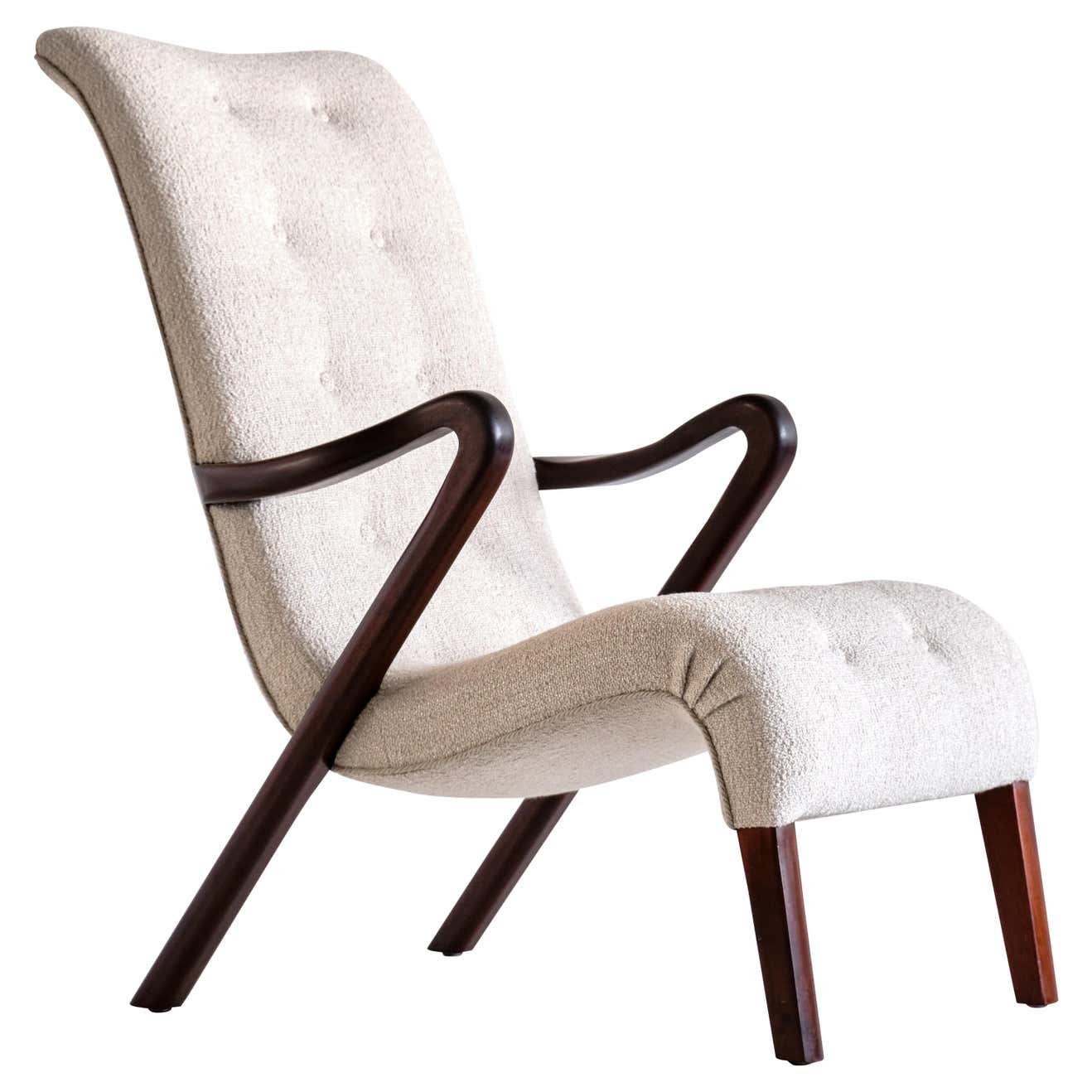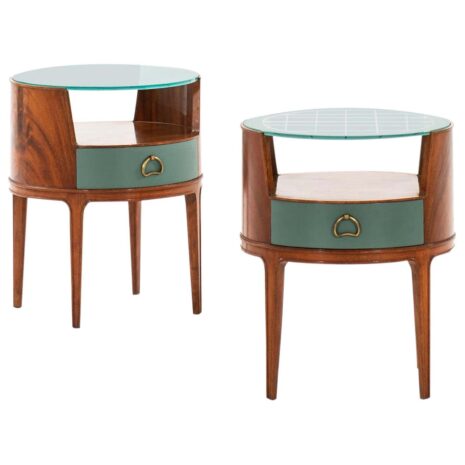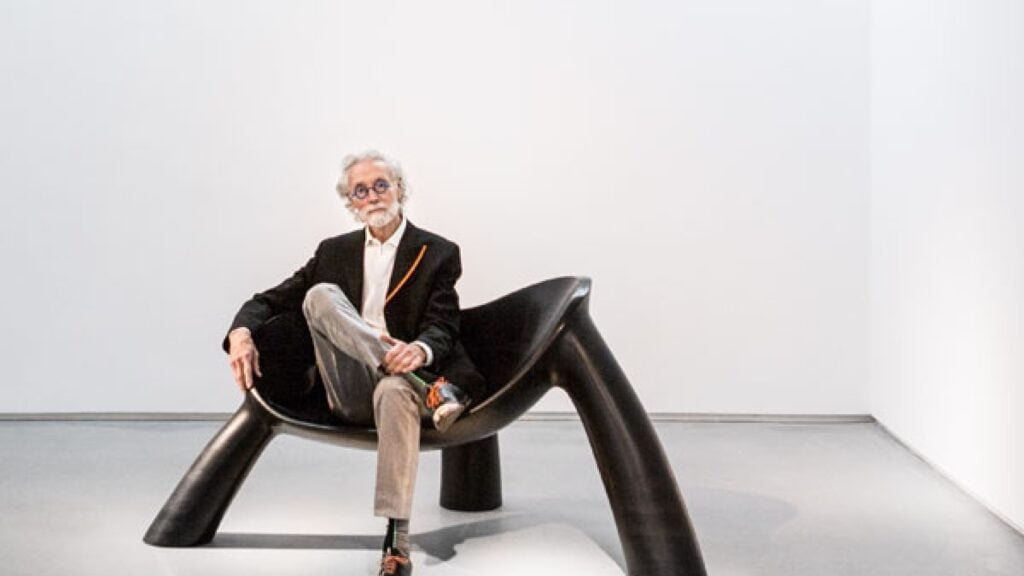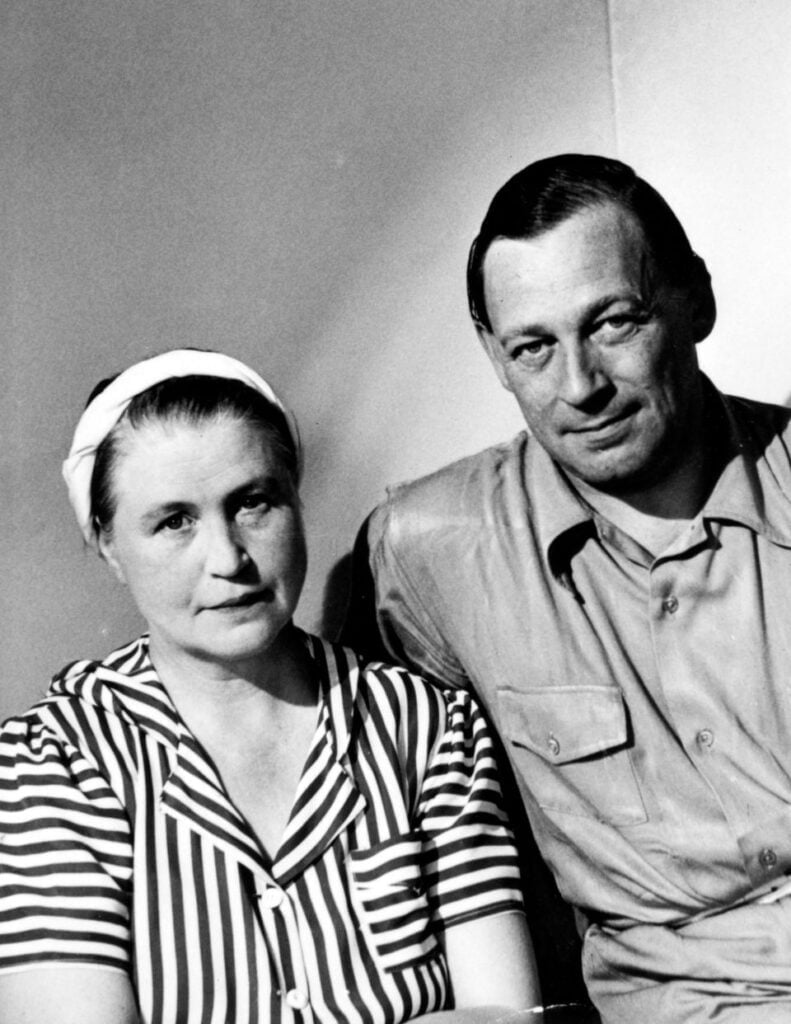Axel Larsson
Axel Larsson
designer
1898-1975, Schweden
Axel Larsson was one of the most important representatives of Swedish modernism between the wars. He studied at the Technical University in Stockholm. From 1925 he designed furniture for mass production on behalf of Svenska (Swedish furniture manufacturer) and soon founded his own workshop in Stockholm.

Larsson designed a dining room interior for the 1930 Stockholm exhibition, which was visibly influenced by German functionalism but looked less strict overall with several accessories such as potted plants and a rug with bold geometric patterns. Similar to his fellow countryman and contemporary Sven Markelius, Larsson initially designed furniture with simple, reduced forms, which resulted primarily from the functional characteristics.
In the mid-1930s, however, Larsson’s design became softer and more organic and more like Bruno Mathsson’s work, such as the innovative Eva chair (1934). For the Swedish pavilion at the New York World’s Fair in 1939, Larsson designed living room furnishings that corresponded to the principles of modernity and aimed for optimal functionality based on ergonomic principles.

From the 1930s and until 1956, Larsson was chief designer at Svenska Möbelfabrik in Bodafors, which was one of the first Scandinavian furniture manufacturers to produce aesthetically pleasing furnishings on an industrial scale.
Larsson’s objects corresponded to the subtle attention to detail of modern Swedish design and characterized elegant functionalism that had a warm and inviting aesthetic. Larsson also designed exclusive handcrafted furniture that was produced by Handverket. Besides, he created the interiors of public and private buildings, including the interiors of the Gothenburg Concert Hall and the Foreign Office in Stockholm, which were designed together with Nils Einar Eriksson.
Larsson’s furniture was mostly modern, but by refusing dogmatic functionalism, it already heralded the softer and more humane approach to design that would flourish in Scandinavia during the post-war years.






